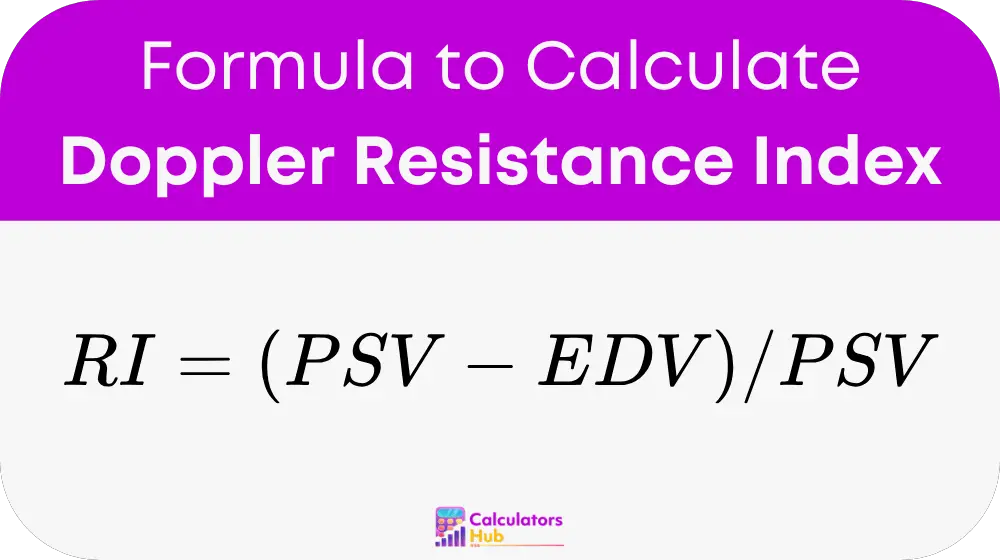The Doppler Resistance Index (RI) Calculator helps medical professionals analyze blood flow in arteries using Doppler ultrasound. It calculates the resistance index (RI) based on the peak and end diastolic velocities of blood flow. This metric is crucial for evaluating vascular resistance, diagnosing conditions like renal artery stenosis, fetal distress, and peripheral artery diseases.
By determining RI, healthcare providers can assess blood circulation efficiency, detect obstructions, and monitor patients with vascular concerns.
Formula for Doppler Resistance Index
The Resistance Index (RI) is calculated using the following formula:

Where:
- RI = Resistance Index (dimensionless value between 0 and 1)
- PSV = Peak Systolic Velocity (maximum blood flow velocity during systole)
- EDV = End Diastolic Velocity (minimum blood flow velocity at the end of diastole)
This formula helps in understanding the level of resistance in an artery by analyzing blood flow dynamics at different cardiac cycle phases.
Reference Table for Common RI Values
Below is a reference table with typical Resistance Index (RI) values for different arteries and their medical interpretations:
| Artery Type | Normal RI Range | Medical Interpretation |
|---|---|---|
| Renal Artery | 0.50 – 0.70 | Normal blood flow |
| Umbilical Artery (Fetus) | 0.60 – 0.80 | Normal fetal circulation |
| Internal Carotid Artery | 0.50 – 0.75 | Normal cerebral perfusion |
| Hepatic Artery | 0.55 – 0.80 | Normal liver blood flow |
| High RI (>0.8) | >0.80 | Indicates high vascular resistance (e.g., stenosis) |
| Low RI (<0.5) | <0.50 | Suggests low resistance (e.g., AV fistula, severe disease) |
This table provides a quick reference to help medical professionals interpret RI values without manual calculations.
Example of Doppler Resistance Index Calculator
Scenario: A doctor performs a Doppler ultrasound on a patient’s renal artery. The results show:
- Peak Systolic Velocity (PSV) = 100 cm/s
- End Diastolic Velocity (EDV) = 30 cm/s
Using the formula:
RI = (100 - 30) / 100
RI = 70 / 100
RI = 0.70Interpretation: An RI of 0.70 falls within the normal range for renal arteries, suggesting adequate blood flow and no significant obstruction.
Most Common FAQs
A normal RI value varies by artery type but generally falls between 0.50 and 0.75. Values above 0.80 may indicate vascular resistance issues, while values below 0.50 may suggest abnormal blood flow dynamics.
The Doppler Resistance Index helps in diagnosing conditions such as renal artery stenosis, fetal distress, hepatic blood flow abnormalities, and peripheral vascular diseases. It provides insights into arterial resistance and helps monitor treatment progress.
Yes. A high renal artery RI (>0.8) can indicate chronic kidney disease (CKD), renal artery stenosis, or organ rejection after a kidney transplant. Doctors use this measurement alongside other clinical assessments for diagnosis and treatment planning.